Happy End (Oldřich Lipský, 1967)
Sep
1
1889
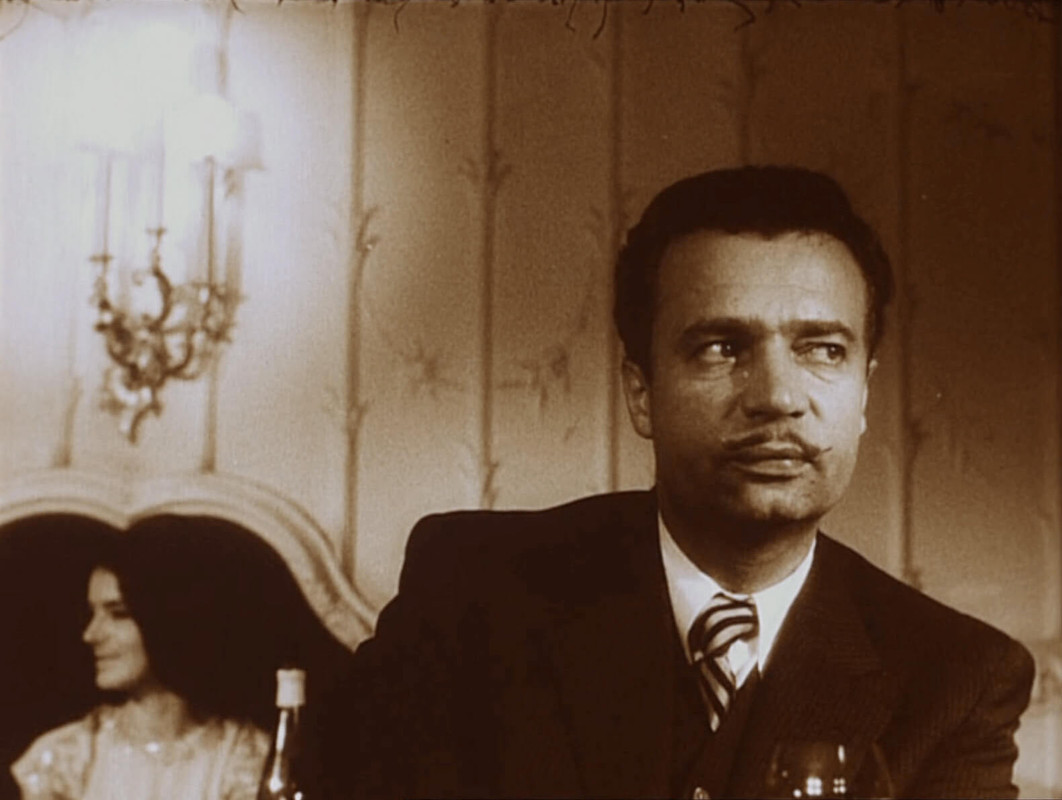
Butcher Bedřich Frydrych (Oldřich Lipský), born September 1, 1889 in Trumberk. DP: Vladimír Novotný.
experimentalfilm
“I first noticed it in Spring last year. […] It was from [my home] that I first saw it—its crest protruding over the roofs on the other side of the road. Surprised that I hadn’t noticed it before, I wondered what it was and then forgot about it for several weeks.” The Black Tower (John Smith, 1985—1987)
Aug
22
black
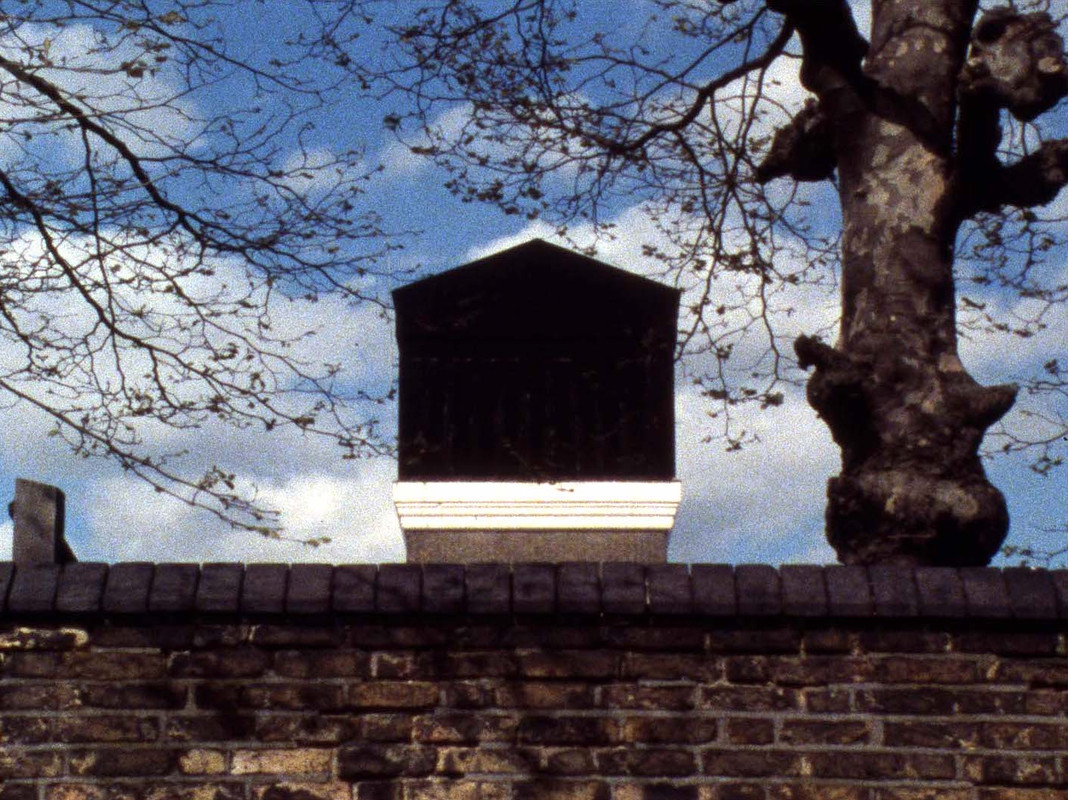
The black tower, visible from behind a brick wall (via)..
Black: a building or structure*
– narrator
A man becomes aware of a formerly unnoticed black tower. Surely it's nothing, yet as the weeks pass, its looming presence takes over.
The black tower was a real structure, first noticed by filmmaker John Smith when he moved to East London. The building, actually the upper part of a hospital's water tower, was painted pitch black, and on sunny days appeared to be a cutout in the sky. By framing the shots in such a way that only part of the surroundings is visible, and editing them in a narrative framework, Smith creates a new context suggesting movement. This style of montage called creative geography, or artificial landscape, was developed by Lev Kuleshov and enables filmmakers to expand existing material and narrative into something that usually is only available to prose poetry.
* the Bales 2025 Film Challenge for August is not date-related but lists, for the most part, the colours of the rainbow.
آداب بهاری [Adab-e Bahari / Rites of Spring] (Ali Asghar Agahbanaei, 1982)
Aug
11
spring
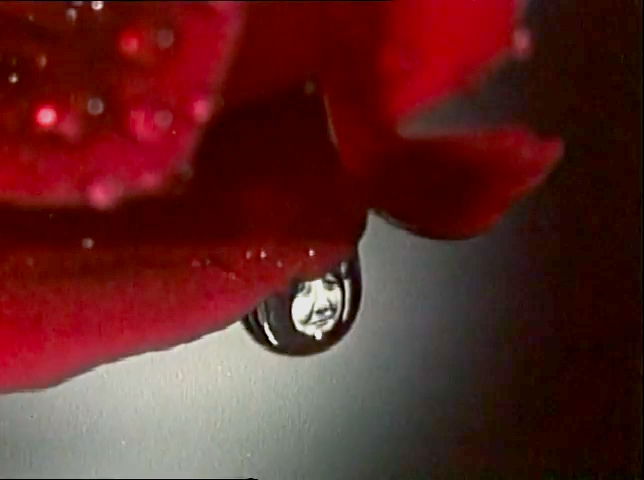
In a dewdrop hanging from a rose, the face of a smiling woman appears.
Dita e Verës, a pagan spring celebration from Albania, celebrated in March: a spring scene*
The restless anticipation of spring. Iran as it was before and after the 1979 toppling of the Shah. While the snow melts away, the Revolution takes place, and fresh buds appear on the rose bushes. A poem.
* the Bales 2025 Film Challenge for August is not date-related.
“Grünes Licht für ehrgeizige, strebsame und arbeitswillige junge Menschen.”Die glücklichen Minuten des Georg Hauser [The Happy Minutes of Georg Hauser] (Mansur Madavi, 1974)
Jul
20
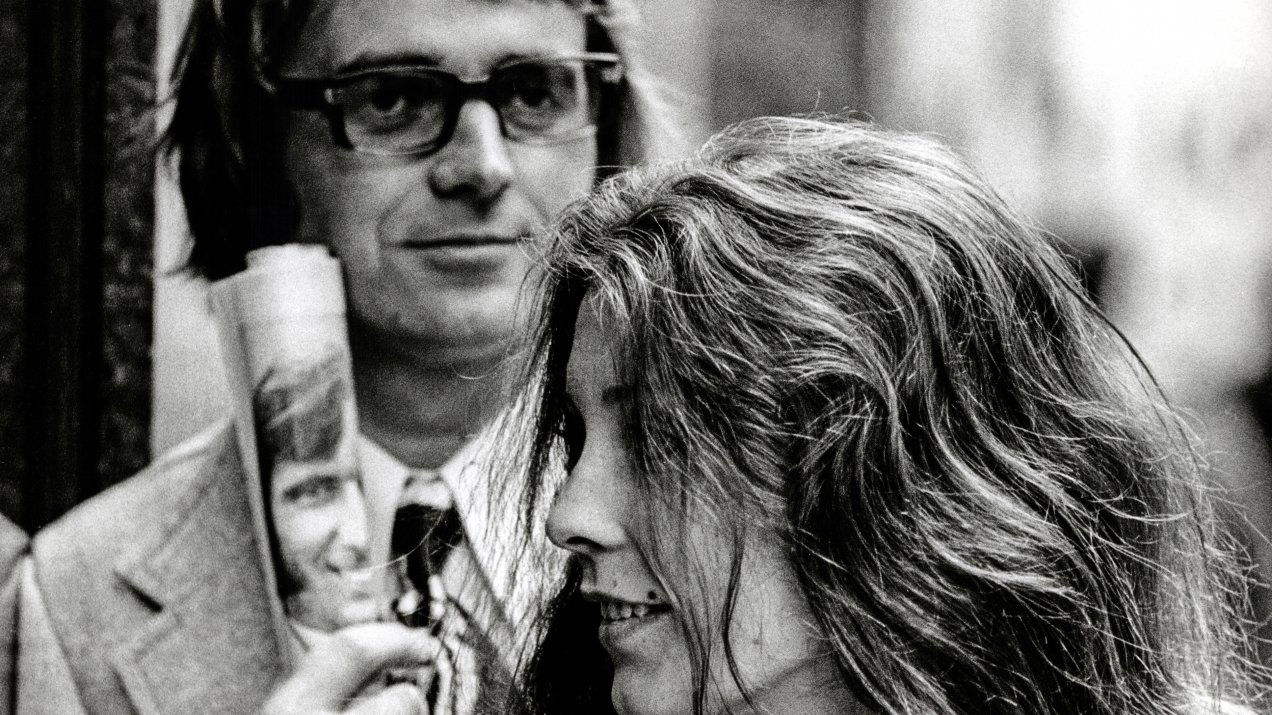
A smiling Georg Hauser (Walter Bannert) with one of his many attractive secretaries. DP: Mansur Madavi.
“Ein Psychogramm zweier ungewöhnlicher, aber auch extrem unterschiedlicher Frauen. Die eine, reich, exzentrisch, ihre Gefühle maskenhaft verbergend, trinkt sich bewusst zu Tode. Sie ist der Fall, der in der Statistik nicht erscheint, weil entweder zu Hause unter Valium gehalten oder unter Verschluss in einer Privatklinik. Die andere ist arm und trinkt sich unbewusst zu Tode. Sie erscheint in der normalen Statistik als Typ der haltlosen Trinkerin” Bildnis einer Trinkerin – Aller jamais retour [Portrait of a Female Drunkard. Ticket of No Return] (Ulrike Ottinger, 1979)
Jul
15
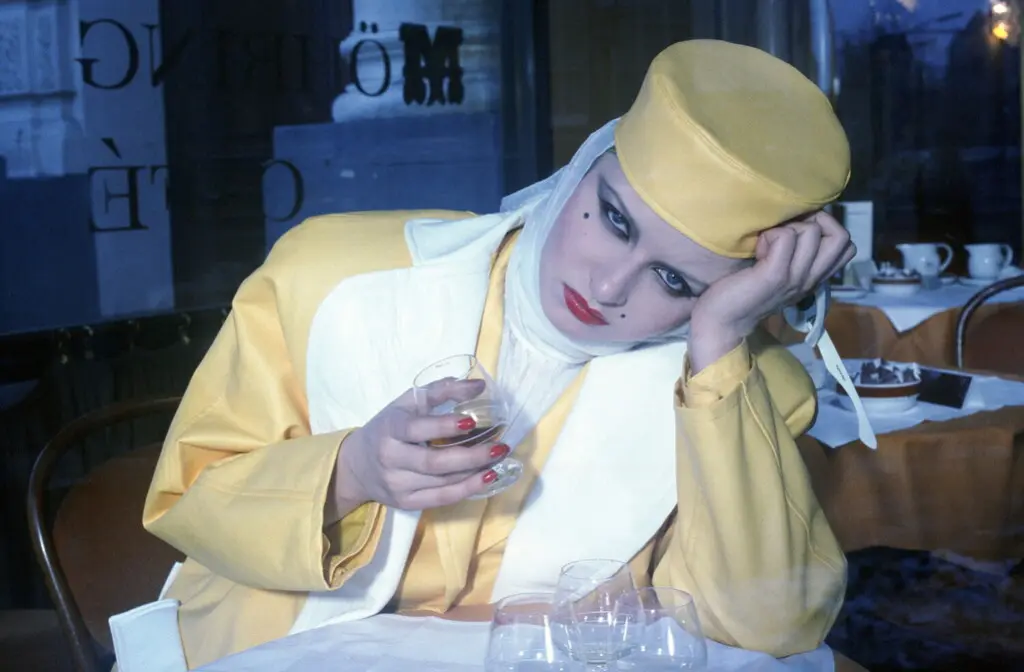
Sie, German for “she/her”, hungover in her fabulous yellow nappa leather outfit (via). DP: Ulrike Ottinger.
Someone is hungover*
– U.O., via
An eccentric woman simply named Sie (Tabea Blumenschein), takes a one-way trip to West Berlin. Accompanied by her alter ego, a homeless alcoholic, and commented on by a Greek choir consisting of Soziale Frage (Social Question), Exakte Statistik (Exact Statistics), and Gesunder Menschenverstand (Common Sense), she drinks herself to death.
* the Bales 2025 Film Challenge for July is, for unknown reasons, mostly not date-related and follows some sort of vacation narrative.
“It appears obvious that the territory is the sum of all the maps, the result of an infinite addition. Or a contrary, the territory is what is left when we remove all the sets of lines, drawings, traces and colors which are covering it. Its existence becomes doubtful.” Zig-Zag – le jeu de l'oie (Une fiction didactique à propos de la cartographie) [Snakes and Ladders] (Raúl Ruiz, 1980)
Jul
5
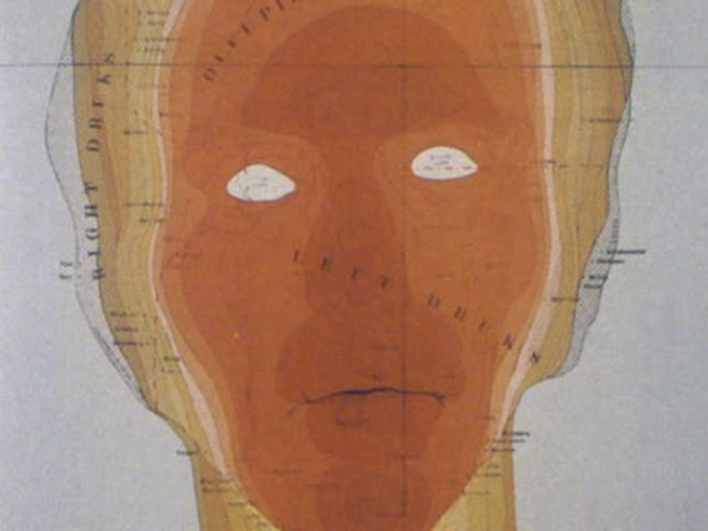
An anthropomorphic map with contour lines sketching out a man's head (via). DP: Alain Montrobert.
Traveling to my vacation destination, a map or globe*
– H., via
A man, H., joins two others playing jeu de l'oie (Game of the Goose), a board game associated with labyrinths and pilgrimage. While the three play, the game opens up maps and new roads to explore.
Following my own Bales' rules, I cannot pick a title twice. See Zig-Zag as an avatar of Raúl Ruiz's O Território [The Territory] from 1981.
* the Bales 2025 Film Challenge for July is, for unknown reasons, mostly not date-related and follows some sort of vacation narrative.
“On July 4, 1976 I and my camera toured the state of Colorado with governor Richard D. Lamm, as he traveled in parades with his children, appeared at dinners, lectured, etc. On July 20, I spent the morning in his office in the state capitol and the afternoon with himself and his wife in a television studio, then with Mrs. Lamm greeting guests to the governor’s mansion and finally with Governor Lamm in his office again. These two days of photography took me exactly one year to edit into a film which wove itself thru multiple superimpositions into a study of light and power.”The Governor (Stan Brakhage, 1977)
Jul
4
1976
And July 20
– Stan Brakhage
“Grünes Licht für ehrgeizige, strebsame und arbeitswillige junge Menschen.”Die glücklichen Minuten des Georg Hauser [The Happy Minutes of Georg Hauser] (Mansur Madavi, 1974)
Jun
25
National Day of Joy
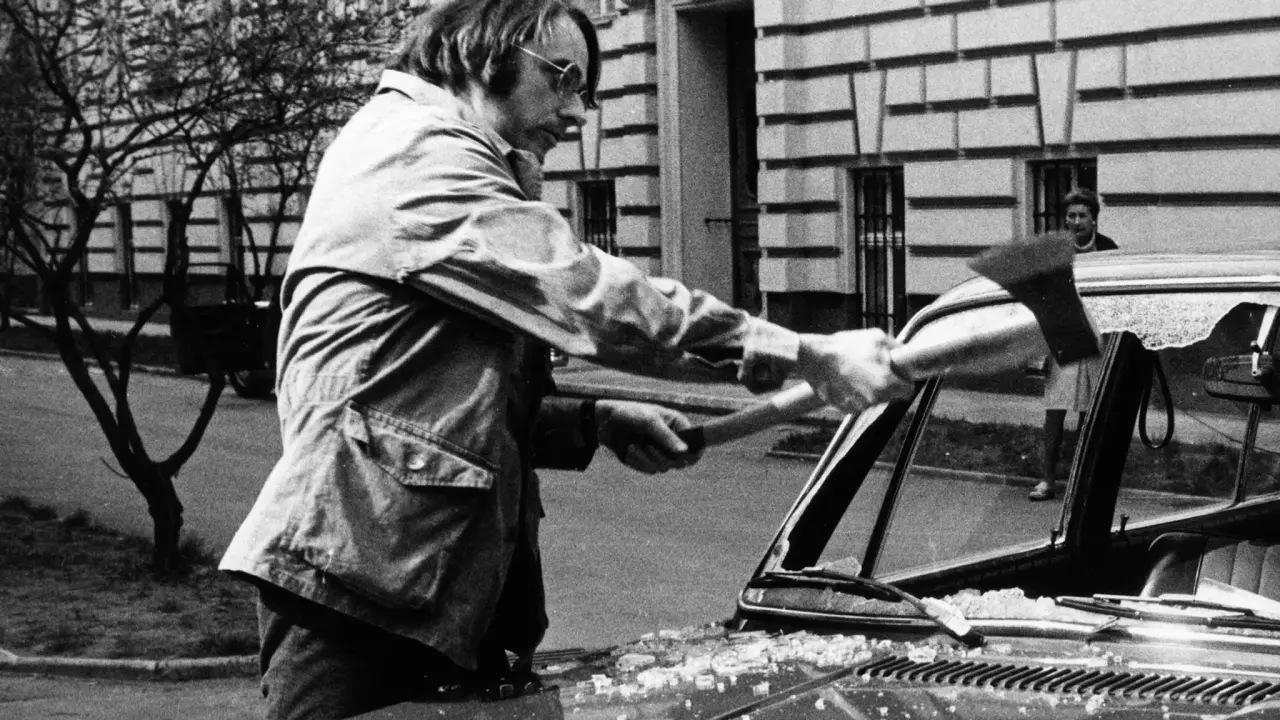
In a moment of total bliss, Georg Hauser (Walter Bannert) wrecks a car (via). DP: Mansur Madavi.
A character who is happy on the National Day of Joy (USA)
Georg Hauser's life is a drag. He gets up to drive his car to the same office to do the same thing surrounded by the same people everyday, just to make money to do the same thing all over again. Then, his glasses break and the new pair makes him see things a bit differently.
“You're a foreigner and you're lost.”L'immortelle (Alain Robbe-Grillet, 1963)
Jun
23
Sat
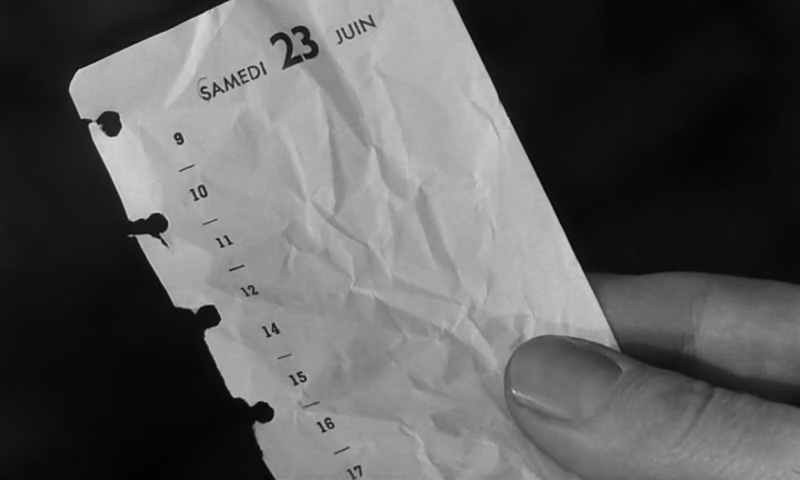
A man's hand holds a crumbled up diary page for Saturday June 23. There are no calendar entries. DP: Maurice Barry.
“Hélène Picard, born in Lyon, May 20, 1943. A child in care, she is reported as a runaway, a thief and unstable.”La Femme Bourreau [A Woman Kills] (Jean-Denis Bonan, 1968)
May
20
1943

A dark-haired woman lounging on a bed. DP: Gérard de Battista.